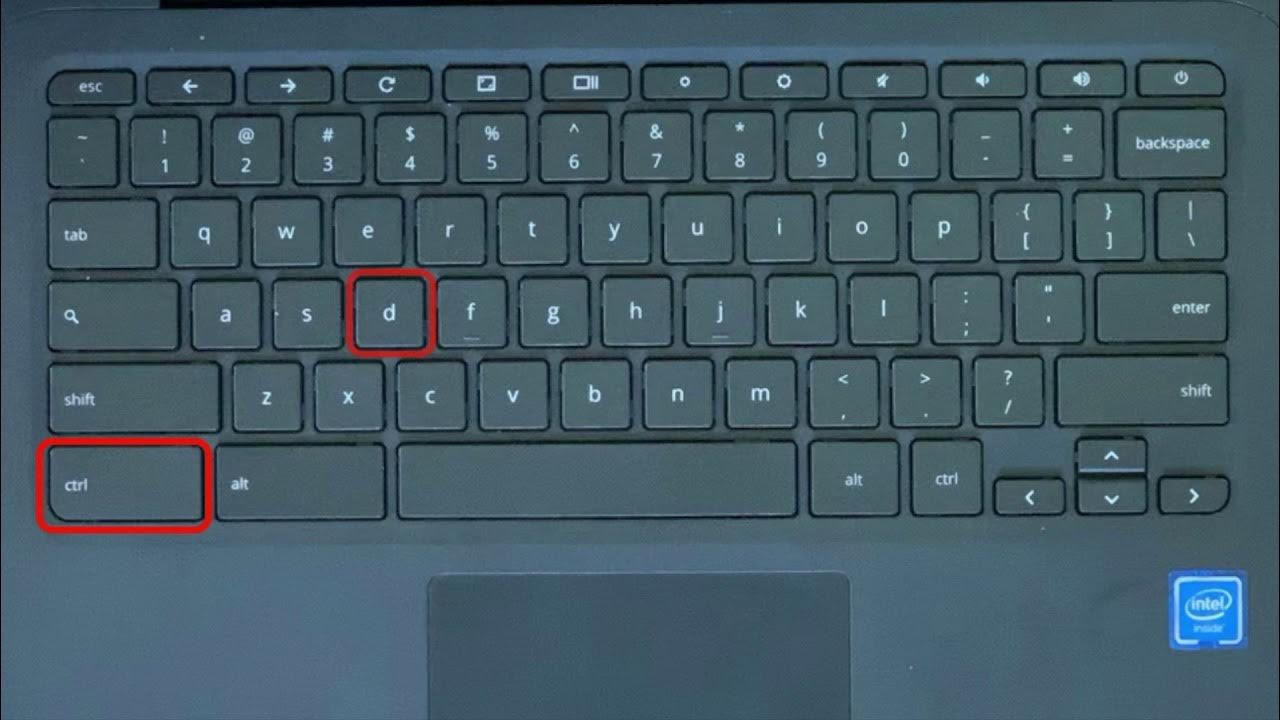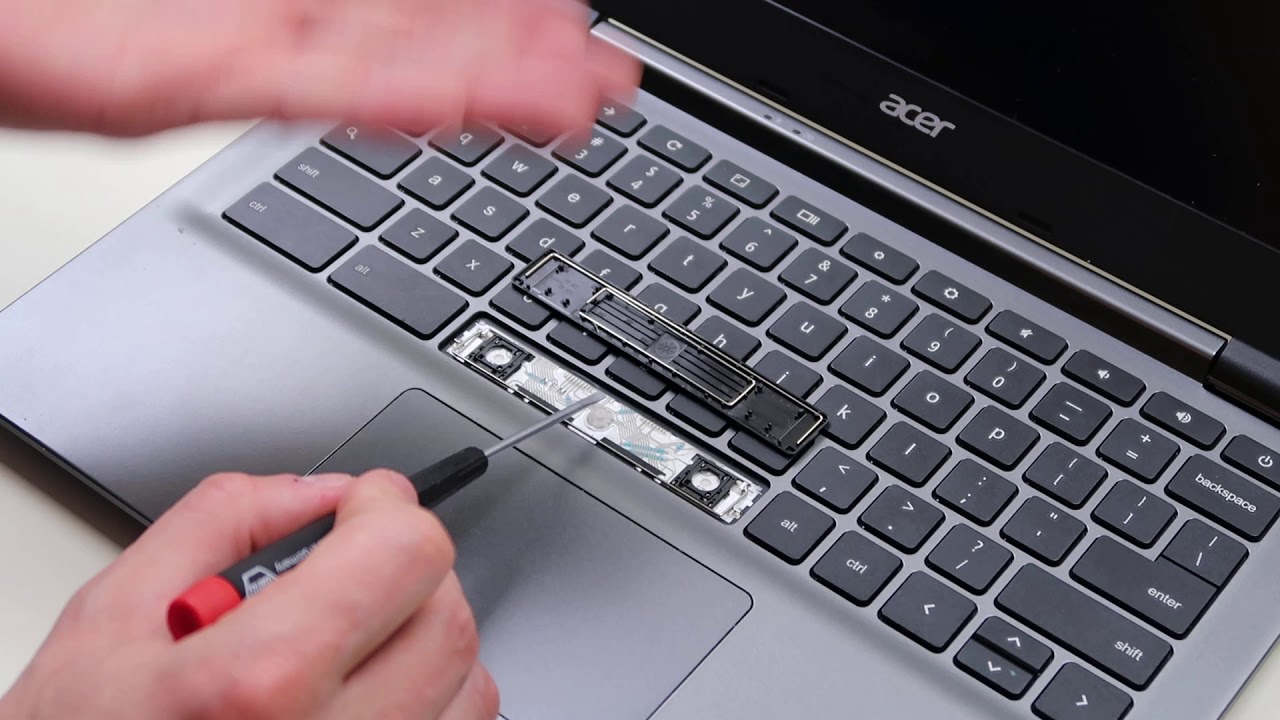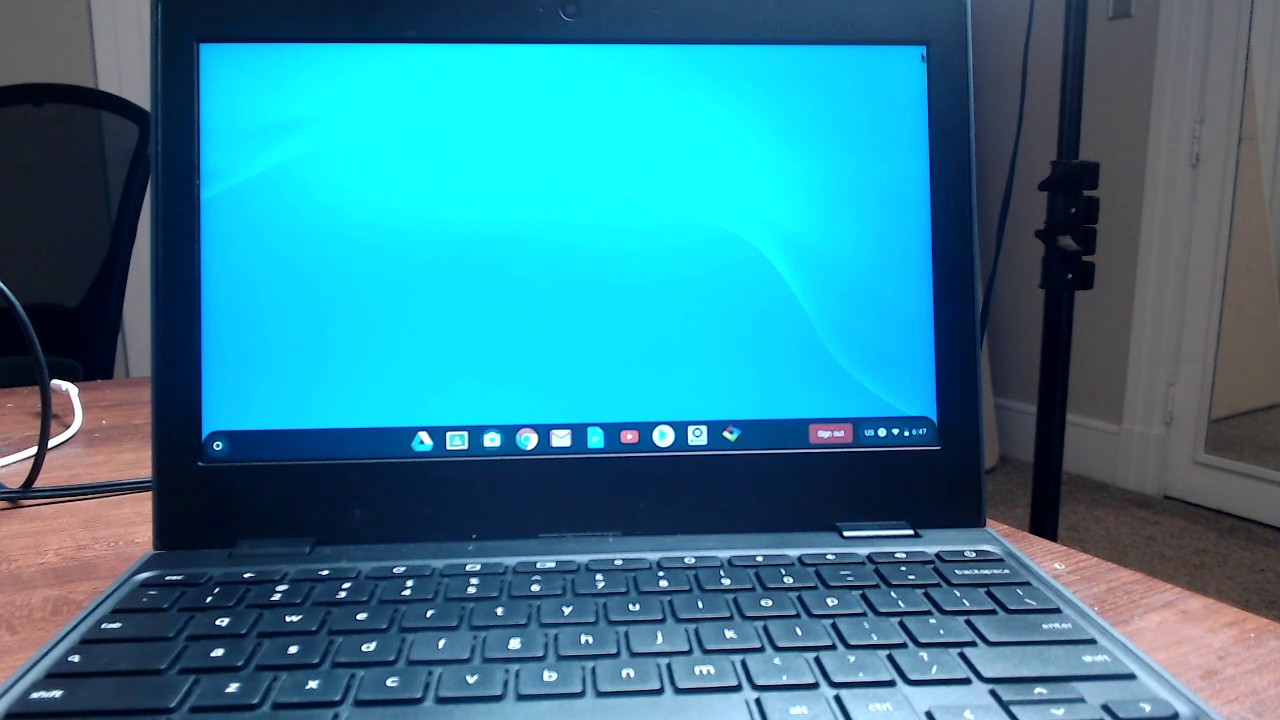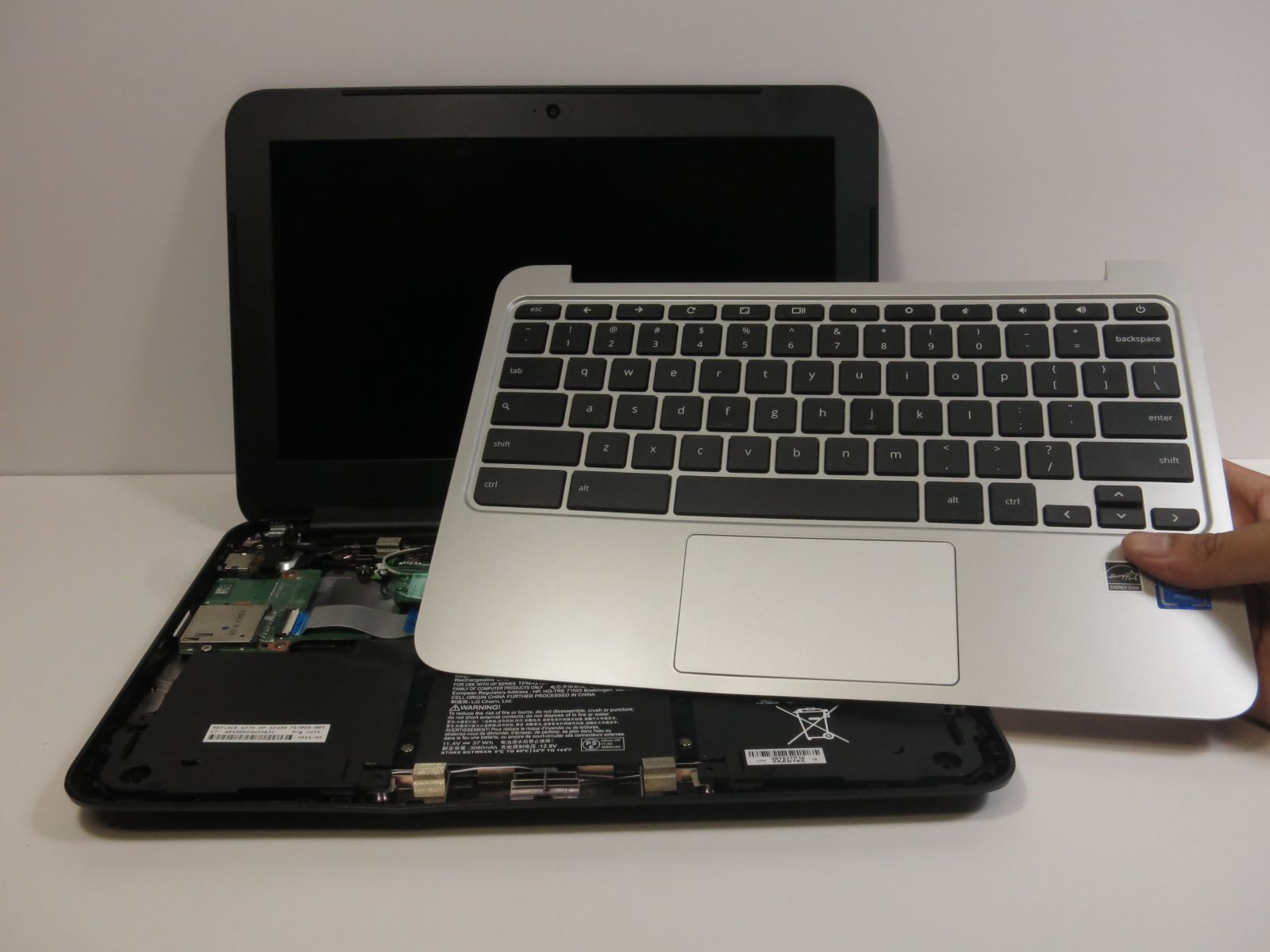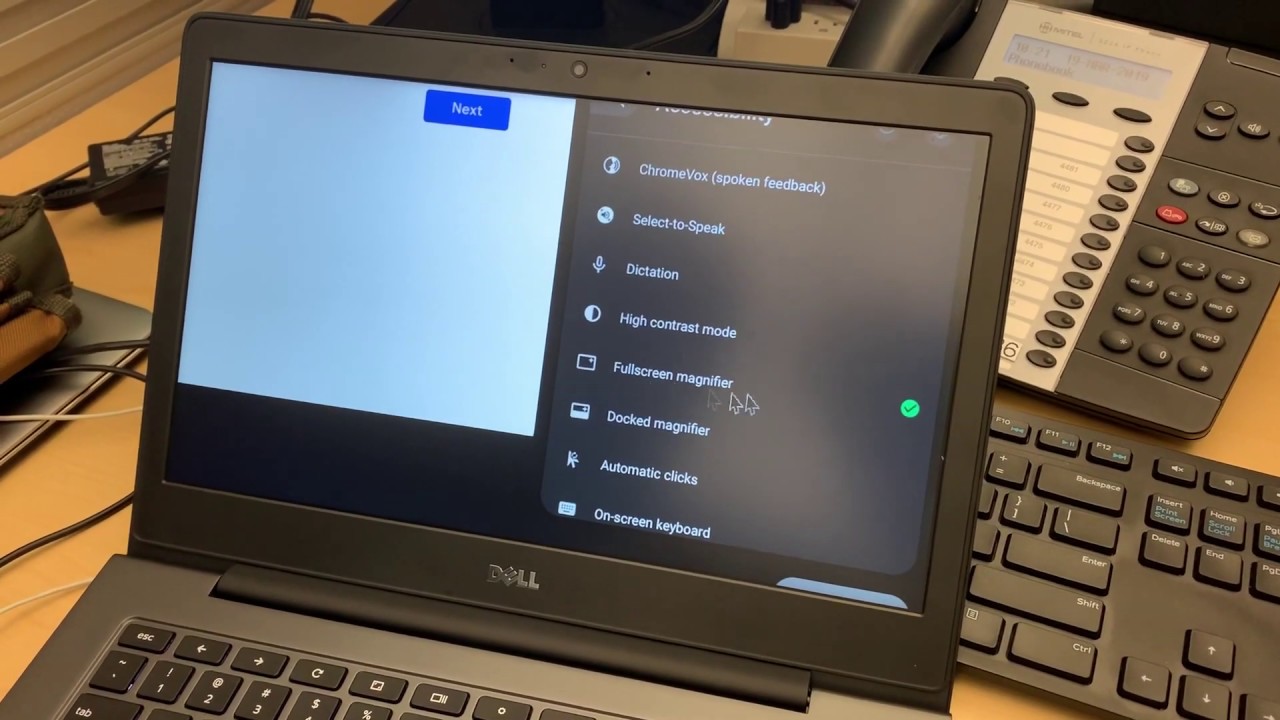Why reset your Chromebook keyboard?
The keyboard is an essential component of your Chromebook, allowing you to type emails, write documents, and navigate various applications. However, there may come a time when you encounter issues with your keyboard that hinder your productivity and overall user experience. In such cases, resetting your Chromebook keyboard can help resolve these problems and restore it to its optimal functionality.
There are several reasons why you might need to reset your Chromebook keyboard. Firstly, you may find that certain keys on your keyboard are not responding or are producing incorrect characters when pressed. This can be frustrating and can greatly impede your typing speed and accuracy. Resetting the keyboard can help eliminate any software-related issues that may be causing these inconsistencies.
Another common issue is when your Chromebook keyboard exhibits lag or delay when typing. This can be particularly bothersome, as it disrupts your typing flow and leads to a less efficient work process. Resetting the keyboard settings can often resolve this sluggishness and restore smooth and seamless typing experience.
In addition, if you have recently customized your keyboard settings or installed any keyboard-related extensions or apps, you may encounter conflicts or compatibility issues. These conflicts can result in malfunctioning keys or unexpected behavior. Resetting the keyboard can help revert to the default settings and resolve any conflicts, allowing your keyboard to function as intended.
Moreover, if you have tried troubleshooting steps like adjusting the keyboard sensitivity or cleaning the keys, but the issues persist, resetting the keyboard can be a viable solution. It can help eliminate any persistent software glitches or inconsistencies and restore your keyboard to its original state.
Ultimately, resetting your Chromebook keyboard should be considered as one of the initial steps when encountering keyboard-related issues. It is a straightforward process that can effectively address common problems like unresponsive keys, laggy typing, and conflicts with customization or extensions. By resetting the keyboard, you can ensure smooth and accurate typing, allowing you to maximize your productivity and enjoy a seamless Chromebook experience.
Common problems with Chromebook keyboard
While Chromebooks are known for their reliability and user-friendly interface, there are a few common issues that users may encounter with their keyboards. Understanding these problems can help you identify whether a reset is necessary to resolve them effectively.
One of the most prevalent issues is unresponsive keys. You may find that certain keys on your Chromebook keyboard do not register when pressed. This can occur due to software glitches or physical obstructions, such as dust or debris lodged under the keys. Resetting the keyboard can help address these software-related issues and restore functionality to the affected keys.
Another problem is the occurrence of sticky or stuck keys. When keys become sticky, they may not spring back into place after being pressed, leading to repeated characters or no input at all. This can happen when liquids or dirt enter the keyboard, causing the keys to stick. While physically cleaning the keys may provide a temporary fix, resetting the keyboard can help resolve persistent issues and ensure smooth key operation.
Some users may experience unusual behavior from their Chromebook keyboard, wherein certain keys produce incorrect characters or perform different functions than expected. This can be attributed to incorrect keyboard settings or conflicts with installed extensions or apps. Resetting the keyboard and reverting to default settings can often eliminate these conflicts and restore the proper functioning of the keys.
Laggy or delayed typing is another common problem. When there is a noticeable delay between pressing keys and characters appearing on the screen, it can significantly impact productivity and typing efficiency. Resetting the keyboard settings can often resolve this issue and ensure a seamless typing experience.
Lastly, users who have customized their keyboard settings may encounter issues wherein the changes they made are not properly implemented or are causing unintended effects. This can lead to key mapping discrepancies or inconsistent behavior. Resetting the keyboard can help undo these customizations and restore the default settings, resolving any conflicts or inconsistencies in the process.
In summary, common problems with the Chromebook keyboard include unresponsive keys, sticky or stuck keys, incorrect character input, laggy typing, and conflicts with customized or installed settings. Resetting the keyboard can effectively address these issues, ensuring smooth and accurate typing on your Chromebook.
Method 1: Powerwash your Chromebook
One of the first methods you can try to reset your Chromebook keyboard is by performing a powerwash. Powerwashing is similar to a factory reset, as it restores your Chromebook to its original settings and removes all installed apps and user data. This process can help resolve keyboard-related issues that may be caused by software glitches or conflicts.
Before proceeding with a powerwash, it is crucial to back up any important files or data that you have on your Chromebook. Once you have backed up your data, follow these steps to powerwash your Chromebook:
- Click on the clock in the bottom-right corner of the screen.
- Select the Gear icon to open the Settings menu.
- In the Settings menu, scroll down and click on “Advanced.”
- Under the “Reset settings” section, click on “Powerwash.”
- A dialog box will appear, explaining what will happen during the powerwash process. Click on “Reset” to confirm.
- Follow the on-screen instructions to set up your Chromebook again after the powerwash is complete.
After the powerwash is finished, your Chromebook will be restored to its default settings, including the keyboard configuration. This can help resolve any software-related issues that may have been affecting your keyboard’s performance.
Keep in mind that a powerwash will remove all installed apps and user data from your Chromebook, so make sure to have a backup before proceeding. Additionally, you may need to reinstall any apps or extensions that you previously had on your device.
Powerwashing can be an effective method to reset your Chromebook keyboard if you are experiencing persistent issues that are not resolved by other troubleshooting steps. It provides a clean slate for your device, ensuring that any software-related issues are eliminated and restoring your keyboard to its default configuration.
Method 2: Reset keyboard settings using flags
If you are experiencing keyboard-related issues on your Chromebook, such as unresponsive keys or incorrect character input, you can try resetting the keyboard settings using flags. Flags are experimental features in Chrome OS that allow you to customize various settings and enable or disable certain functionalities. By resetting the keyboard flags, you can restore the default keyboard settings and potentially resolve any conflicts or inconsistencies.
To reset keyboard settings using flags, follow these steps:
- Open a new browser tab on your Chromebook.
- In the address bar, type “chrome://flags” and press Enter.
- A page with various experimental features will appear.
- Click on the search bar at the top of the page and type “keyboard.”
- Look for any keyboard-related flags, such as “Enable new input types,” “Enable on-screen keyboard,” or “Enable virtual keyboard menu.”
- For each keyboard flag you find, click on the drop-down menu next to it and select “Default” or “Disabled” to reset the setting.
- After resetting all applicable keyboard flags, click on the “Relaunch” button at the bottom of the page to apply the changes.
Once you have completed these steps, your Chromebook will reset the keyboard settings based on the default configurations. Any conflicts or inconsistencies that were causing keyboard issues should now be resolved.
It’s worth noting that the availability of keyboard flags may vary depending on the version of Chrome OS you are using. Therefore, it is possible that you may not find specific keyboard flags mentioned above. If that is the case, you can try searching for general flags related to input or keyboard settings and reset them to default or disabled.
By resetting keyboard settings using flags, you can adjust any customizations or experimental features that may have been affecting your keyboard’s performance. It is a simple yet powerful method to restore the default keyboard settings and ensure optimal functionality on your Chromebook.
Method 3: Perform a hard reset
If you are still experiencing keyboard issues on your Chromebook despite trying other troubleshooting methods, performing a hard reset can often resolve these persistent problems. A hard reset, also known as a hardware reset or power cycle, helps to reset the internal components of your Chromebook and can eliminate any temporary software glitches that may be affecting the keyboard.
To perform a hard reset on your Chromebook, follow these steps:
- Disconnect any external devices or peripherals from your Chromebook.
- Press and hold the Refresh key (the key with the circular arrow icon) on your keyboard.
- While holding the Refresh key, press and hold the Power button (the button that turns your Chromebook on and off) on the side of your device.
- Continue holding both keys for about 10 seconds.
- Release the keys and wait for your Chromebook to restart.
After the hard reset is complete and your Chromebook has restarted, check if the keyboard issues have been resolved. The hard reset effectively resets the internal hardware components and can help eliminate any temporary glitches that may have been causing the keyboard problems.
It’s important to note that performing a hard reset will not delete any of your files or data on your Chromebook. However, it is always a good practice to back up your important files before attempting a hard reset, just in case.
If the keyboard issues persist after performing a hard reset, it is advisable to seek further assistance from a Chromebook support professional or the manufacturer’s customer support. They can provide additional troubleshooting steps or suggest a repair or replacement if necessary.
Performing a hard reset is a simple yet powerful method to resolve persistent keyboard issues on your Chromebook. It can help reset the internal hardware components and eliminate temporary glitches, allowing your keyboard to function properly once again.
Method 4: Use the Accessibility Keyboard
If you are encountering difficulties with your Chromebook keyboard, an alternative solution is to use the Accessibility Keyboard. The Accessibility Keyboard is a feature specifically designed for users who may have difficulty typing on a physical keyboard or prefer an on-screen keyboard option. By utilizing this feature, you can bypass any issues with the physical keyboard and continue working smoothly on your Chromebook.
To access and use the Accessibility Keyboard on your Chromebook, follow these steps:
- Click on the clock in the bottom-right corner of the screen to open the system tray.
- Click on the “Accessibility” option.
- In the Accessibility menu, enable the “Enable Accessibility Keyboard” option.
- A floating keyboard icon will appear on your screen.
- Click on the Accessibility Keyboard icon to open the on-screen keyboard.
- You can now type using the on-screen keyboard by clicking on the keys with your mouse or touchpad.
The Accessibility Keyboard provides an alternative method for typing on your Chromebook when the physical keyboard is not functioning correctly. It can be particularly useful if you are experiencing issues with certain keys or are unable to type using the physical keyboard at all. The on-screen keyboard offers a convenient and accessible way to continue using your Chromebook without being hindered by keyboard-related problems.
It’s important to note that while the Accessibility Keyboard can be a helpful workaround, it may not be a permanent solution to fix the underlying issues with your physical keyboard. If you are frequently encountering keyboard problems, it is advisable to try other troubleshooting methods or seek professional assistance to address the root cause of the problem.
By utilizing the Accessibility Keyboard on your Chromebook, you can ensure a seamless typing experience regardless of any physical keyboard issues you may be facing. It provides a temporary solution to continue using your device and can be particularly beneficial for individuals who prefer or require an on-screen keyboard option.
Method 5: Update your Chromebook’s software
One of the simplest yet effective methods to address keyboard issues on your Chromebook is to ensure that your device’s software is up to date. Regular software updates often include bug fixes and performance improvements that can help resolve keyboard-related problems and enhance overall system stability.
To update your Chromebook’s software, follow these steps:
- Click on the clock in the bottom-right corner of the screen.
- Select the Gear icon to open the Settings menu.
- In the Settings menu, scroll down and click on “About Chrome OS.”
- Click on the “Check for updates” button.
- If an update is available, click on the “Restart to update” button to install the update.
After the software update is complete and your Chromebook has restarted, check if the keyboard issues have been resolved. In many cases, updating your Chromebook’s software can fix bugs or conflicts that may be causing keyboard problems.
It is important to note that software updates may take some time to download and install, depending on your internet connection and the size of the update. Make sure your Chromebook is connected to a stable internet connection and plugged into a power source during the update process to avoid any interruptions.
If updating your Chromebook’s software does not resolve the keyboard issues, you may need to explore other troubleshooting methods or seek assistance from a Chromebook support professional.
Keeping your Chromebook’s software up to date is a proactive approach to maintaining optimal performance and resolving potential issues. By regularly updating your device, you can ensure that your Chromebook’s keyboard, along with other system components, operates smoothly and efficiently.
Conclusion
The keyboard is a vital component of your Chromebook, and encountering issues with it can be frustrating. However, with the various methods outlined in this article, you can reset and resolve common keyboard problems on your Chromebook.
By powerwashing your Chromebook, you can restore it to its default settings and address software-related keyboard issues. Resetting keyboard settings using flags allows you to revert any customizations and restore default configurations. Performing a hard reset can help eliminate temporary glitches and restore keyboard functionality. The Accessibility Keyboard provides an on-screen alternative for typing when the physical keyboard is problematic. Lastly, keeping your Chromebook’s software up to date can fix bugs and improve overall system performance, including the keyboard.
It’s important to note that while these methods can often resolve keyboard issues, more complex problems may require professional assistance. If you have tried the recommended methods and the problems persist, consider reaching out to a Chromebook support professional or the manufacturer’s customer support for further guidance.
Remember to back up your important files before attempting any reset on your Chromebook. Additionally, it’s essential to perform regular maintenance, such as cleaning the keyboard and keeping it free from dust and debris, to maintain its optimal functionality.
By following these methods, you can overcome common keyboard problems and enjoy a smooth and efficient typing experience on your Chromebook. Don’t let keyboard issues hinder your productivity – take the necessary steps to reset and resolve them, allowing you to make the most out of your Chromebook’s capabilities.







